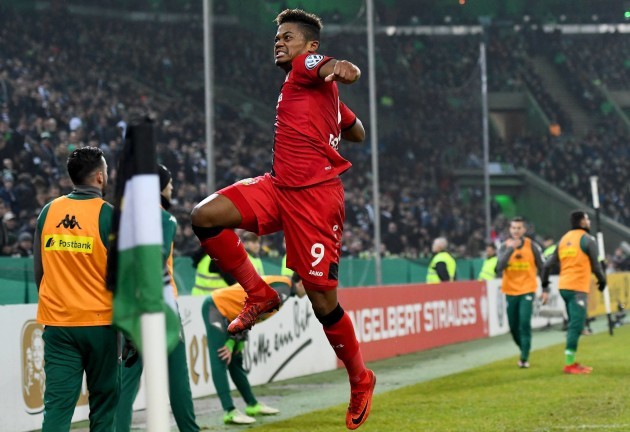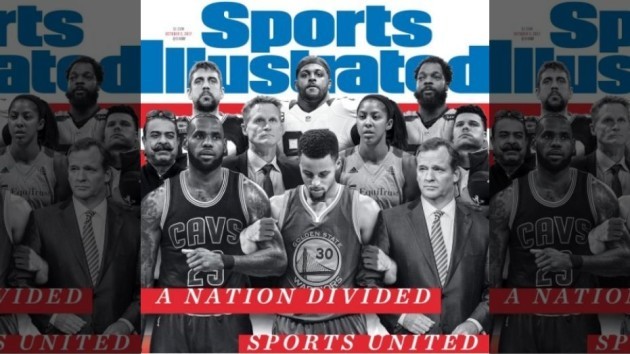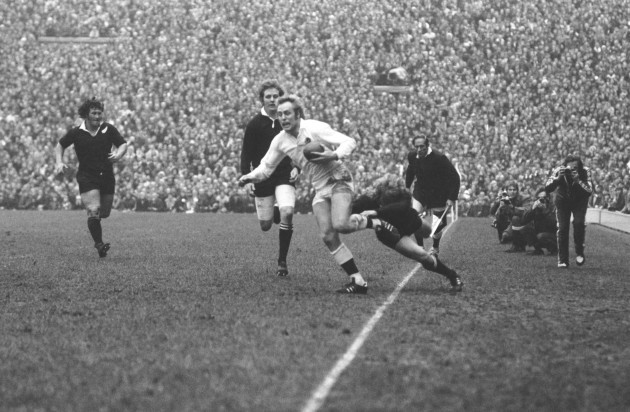1. “If I played for Germany, it does not mean I do not love my country,” he said. “You know you are still Jamaican. That is where you were born.”
That is something Bailey has been conscious of ever since he left Jamaica — perhaps earlier, right back to the moment, at the age of 8, that he first encountered the key figure in his rise: his adoptive father, Butler.
Eventually, though Bailey remains in touch with his birth family — his younger sister led him out onto the field for a Leverkusen game in March — Butler formally adopted him. It is Butler whom Bailey refers to as Dad, and Butler’s son, Kyle, whom Bailey considers his brother. “Blood,” he said, “does not make you family.”
When Bailey was 12, Butler, convinced he could not fulfill his potential amid the privations of Jamaican soccer, decided to take him and Kyle Butler to Europe.
2. The Dallas Cowboys taught their cheerleaders and dancers what to say to people who said offensive things or touched them inappropriately. The women were told never to upset the fans.
“We were taught, if someone’s getting handsy on you, how to navigate that,” said the former longtime Cowboys cheerleader. “We were told what to say, like, ‘That’s not very nice,’ To be sweet, not rude. Say, ‘Can I ask you to step over here?’ Use body language to help deter the situation. Never be mean. Never. Always courteous. Because if it’s not for the fans, we wouldn’t be here — that’s how we were supposed to think of this.”
“Now I’m like, no, we shouldn’t be trained on how to handle that situation. We should be trained how to raise our hand and say, ‘Security, get this man away from me!’ I wish I could tell my 20-year-old self that.”
3. I met my caddie, Allan, who had 17 years of experience working here, and apologized in advance. He later told me that he once caddied for Larry David, which probably was a good primer for the uncomfortable comedy he was about to witness.
In the champions’ locker room, I was assigned to the stall reserved for Zach Johnson and Billy Casper. We made our way to the first tee, where club pro J.J. Weaver noted the slight drizzle and told our foursome to stay dry.
It was too late. I had wet my pants.
The great fear, of course, was topping my drive with the club officials watching. Legend has it, an employee for a local newspaper once took two wild swipes at that tee shot, leaving huge gashes in the ground. When he tried for a third one, a green-jacket wearing member grabbed his club.
“Okay,” he said. “That’s enough.”
I didn’t want to get dragged off the premises already, so when I hit my borrowed Big Bertha about 220 yards into the center of the fairway, I was giddy. I had hit a decent golf shot! Hey, maybe this wouldn’t be that bad after all.
Uh, yeah. It was that bad.
4. As one editor explained it to me at the time, “When people get their issues in the mail now, they already know the score, they’ve already seen the highlights. We need to tell them what’s going to happen next.”
It all sounds very rational, except it overlooks one salient truth: Sports Illustrated readers have always known the score by the time their issue arrives.
SI’s news stories were never about telling you who won, it was about telling you why and how they won, the subtle differences that separated one world-class athlete or team from another, and the endless ways that people revealed their character through competition. Furthermore, what the magazine learned, again and again in the coming decades, was that a sports event being televised only increased interest in those stories. The more people saw of a sport, the more they wanted to read about it. And SI was there, to provide the best story, the deepest understanding, the telling picture, the last word.
Today’s SI still does important investigative features (like its recent pieces on the allegations of sexual harassment surrounding the Dallas Mavericks and Carolina Panthers) and absorbing long profiles. But with the aversion to news stories that began in the late ’90s, there is less of a texture to the magazine’s story mix these days, and fewer surprises. As SI became less newsy and less timely, and more homogeneously feature-oriented, it began to feel less urgent, less necessary, less vital.
And then, over the past three years, it just began to feel less. Period.
The Ringer’s Michael MacCambridge asks: ‘What will become of Sports Illustrated?’
5. Given the guard’s provocation, most teammates expected Murdoch to face limited disciplinary action. Instead he was ordered to leave the tour and go home. His teammates accused the tour manager, Ernie Todd, who was struggling with the cancer that would kill him, of caving in to pressure from British officials and the news media.
To this day Murdoch remains the only All Black to have been sent home from an international tour.
But Murdoch, in fact, did not go home. Issued with a ticket back to New Zealand, he got off the plane in Singapore and diverted to Australia — to the city of Darwin, on the northern coast, the gateway to the vast, sparsely populated Northern Territory.
And there, for all intents and purposes, he disappeared. He “went bush,” as the Australians say. He became a rugby version of Bigfoot and the subject of a play, his legend growing in inverse proportion to the confirmed sightings of him.
Indeed, the world outside the drilling sites and sheep stations of the Outback heard about him only a handful of times and not at all after 2001.
6. ”And then, earlier in the season, my son stopped playing briefly, went over to the TV and pointed at one player who he said had the same hair as Victor, one of his teachers at his nursery. I told him the player’s name. That’s Mo Salah, I said. He could say Salah so we enjoyed that, but I didn’t think much of it.
This was early in the season and I thought Salah might be another player who does some nice things on the ball but never really delivers, never really gets you a goal. I’d seen this type before, easy come, easy go. It didn’t matter. Mo Salah would not be detaining us long. We would not be emotionally investing in Mo Salah.
And then something else happened. My son wanted to play football or, at least, he ran furiously up and down on the spot, kicked the ball and described this as football. Then he asked if he could be a footballer and, because he could say Salah, he was Salah and I would pass the ball to him and he would kick it under the bed and that would be another goal for Mo Salah. And we’d celebrate. The celebrating, which is when he runs and jumps into my arms, is the best bit.”




